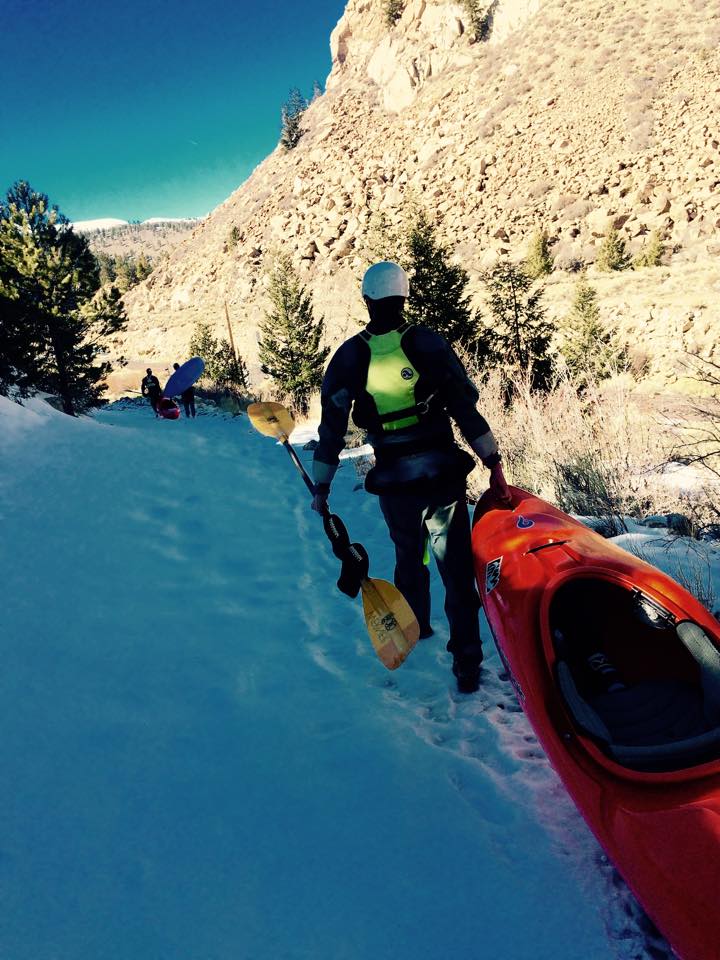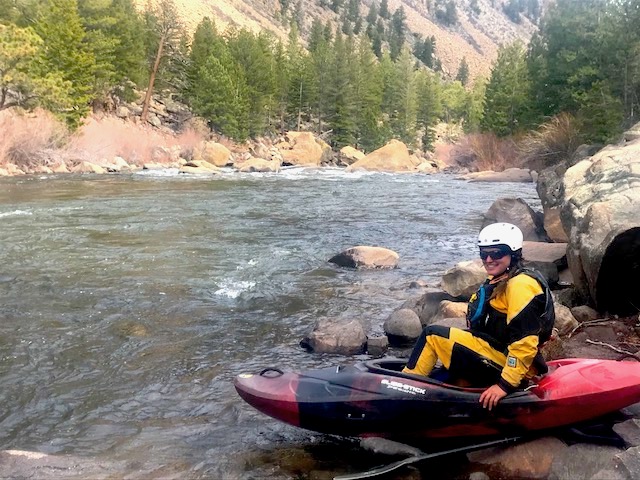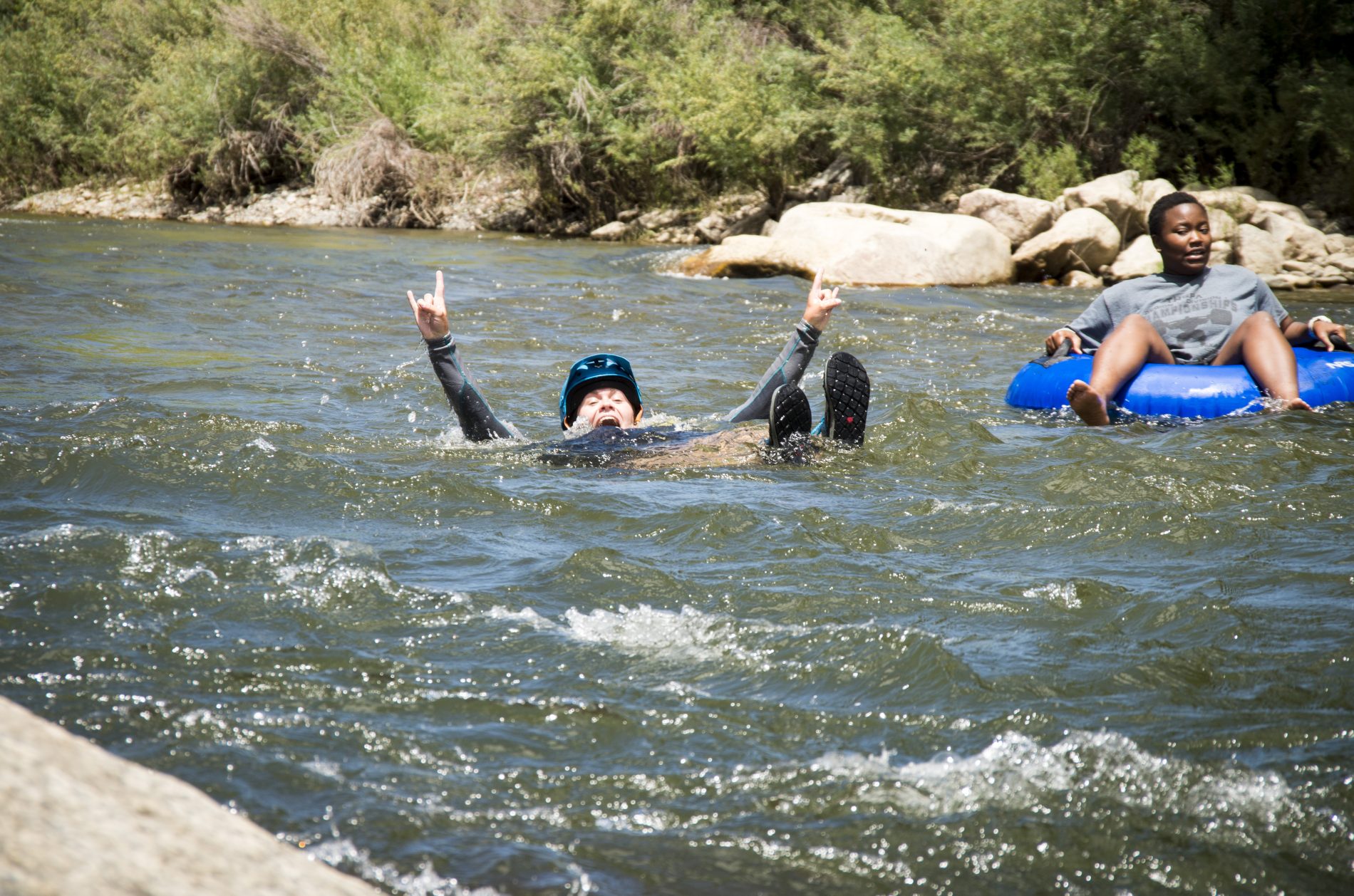
GEAR HACKS: Drysuit Care and Repair


So you’ve officially shelved the snow gear and are ready for some shoulder season paddling action. But what happens when spring weather is more suited to skis than your SUP, kayak, or raft?
Enter the drysuit – that tailored hunk of Gore-Tex or other waterproof breathable material you dropped ten bills on to extend your boating bliss through last fall. It’s a tool not a jewel, so you’ll want to use your warm, dry cocoon in that swiftwater rescue class or for dawn patrol runs this spring.
Read on for some tips from Kokatat Product Manager Matt Porter to protect your investment and stay warm and dry for many off-season, inclement weather paddles to come.

Stoked to be dry.
Wash it. Technical garments perform better when they are clean. That brightly colored fabric does more than look steezy on the river — it is actually made up of several layers, including a porous membrane that allows vapor to escape from the inside, but keeps larger molecules of liquid water out.
“Mud on face fabric can damage that membrane by poking larger holes,” says Porter. If you are paddling on a clear river, simply rinse the feet and any mud smears at the takeout before tossing the suit in the back of your truck. And avoid walking around the parking lot in Gore-Tex socks.
Also, “stuff stinks after awhile,” Porter says, but unlike your gym clothes, you don’t want to wash your drysuit every time you wear it, this can wear out the durable water repellant (DWR) coating that’s also part of most technical fabrics.
When washing, always follow sewn-in care instructions. Kokatat recommends using cold water, delicate cycle, gentle liquid soap, with no bleach or harsh chemicals, and lots of water, in a front loading machine. Rinse well (which may mean running it through a second time, inside out with no soap OR use a cold shower). Line dry.
Lube for longer gasket life, especially in dry climates like Colorado and the mountain west. Porter recommends 303 Aerospace Protectant, a UV protectant solution designed to keep RV tires and boat seats from cracking, similar to Armor All. “One thing we’ve found is if you use [303] too often it does have negative effects,” Porter says. He advises spraying 303, rubbing it in, and wiping off the excess with a cloth about once a month.
Another option is silicone, in the form of a grease made by McNett. While it offers no UV protection, the grease “puts a physical barrier between latex and and the outside world and keeps contaminants from interacting with it,” Porter says. While most of the his evidence is anecdotal from years of watching garments come through the Kokatat repair room, Porter says he hasn’t seen any overuse issues with silicone grease.
Porter has also seen sunscreen and bug spray degrade and melt rubber gaskets, so apply these substances carefully after donning your suit.
Stretch or trim too-tight gaskets for increased comfort and bloodflow to the brain. First, try stretching the gasket over a form, like a water jug or soccer ball, overnight. If it is still too tight, find the raised rings around the inside of the neck gasket. Trim the gasket between the rings, one ring at a time, until it is comfortable but does not allow water in when you are swimming. The cut must be straight with no nicks in the trimmed edge. Remember, cut once and test before cutting again!
Repair your own ripped or dry-rotted gaskets to get back on the water in the morning! Replacement gaskets usually run about $20-$40 and are available from NRS, Colorado Kayak Supply, or your local paddlesports retailer. There are several kits out there to make replacing a gasket a snap, though thrifty kayakers have been know to make their own forms out of foam, cardboard, or even plates. Kokatat also has an excellent instructional video available on Vimeo.
“The biggest thing is the intimidation factor, you’re going to take scissors to a 400-dollar drytop,” Porter says. The most common cause of sending a home repair back to the factory for a fix is using too much Aquaseal, or mixing the the glue with an accelerant such as Cotol and making the solution too runny, he says.
“We’ve seen a few where people didn’t spread the glue well, so they were getting gaps where there were folds in the gasket,” Porter says. “We try to give a good idea of showing the amount of Aquaseal you have to put down, then spreading it with spatula.”
Zip it good. The zipper is one of the most sensitive components of your drysuit. A zipper that is not fully closed, or has dirt in the zipper teeth or closing end, is likely to fail. Always pull the zipper in a straight line, in a smooth and even motion. Avoid yanking or pulling to the side. Have another person help you if you cannot easily reach any part of the zipper. Be especially gentle in colder air and water temperatures.
Never force a jammed zipper. Unzip, examine the jammed point for obstruction or damage, then carefully try again. Zipping over a piece of dirt or underclothes can derail the teeth and ruin the zipper. The zipper is most vulnerable when you are getting in and out of your suit. Be sure the zipper is open completely, and try not to put force on the ends that could tear the zipper apart.
Clean the zipper occasionally with mild soap, water and a toothbrush. Lubricate occasionally with a light coat of paraffin or beeswax for metal tooth zippers. For plastic water-tight zippers, a dab of McNett ZipTech Semi-Solid Zipper Lubricant in the closing end improves sealing.
Store the suit properly. Metal tooth zippers should be partially closed with the zipper slide left open about two inches. This will help alleviate pressure on the sealing elements. Plastic water-tight zippers should be stored in the entirely closed position. Make sure the suit is dry inside and out, then store either hanging or loosely rolled.
When in doubt, send your technical dry garments to the experts at the manufacturer for repair. Kokatat offers a discount club program for individuals or families/groups on home repair materials and factory leak-testing and patching. Immersion Research will work on any brand of dry garment, and also offers tips for care and repair on their Web site.
Matt Porter has worked at Kokatat since 2005. He’s seen drysuits ravaged by dog bites and dragging behind a shuttle vehicle for hours on a Forest Service Road come through the company’s Arcata, California repair room. When he’s not working on the company’s Web site or product line, he can be found paddling Burnt Ranch Gorge on the Trinity River.


